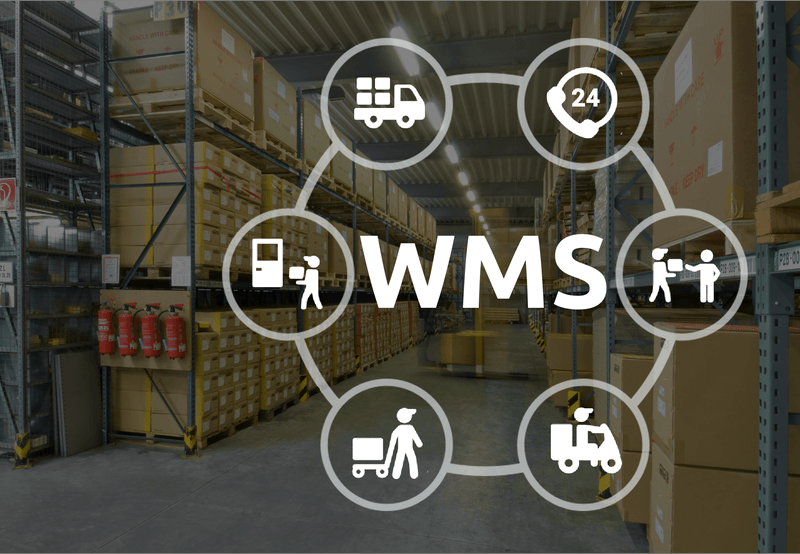Logistics and Supply Chain Analysis for U.S. eCommerce
Alex
3/13/2025
Focusing on Apparel, Toys, and Business Supplies for Companies with $5M–$500M in Annual Revenue
This report examines how logistics and supply chain dynamics affect mid-sized U.S. eCommerce companies in the apparel, toys, and business supplies sectors. It explores the impact of tariffs and trade policies, port congestion and shipping delays, warehouse placement strategies, product-specific availability and cost fluctuations, and overall profitability in today’s post-pandemic landscape.
Note: The tariff section has been updated with the most recent information as of March 13, 2025, and the report now includes actionable steps to mitigate supply chain and tariff-related challenges.
1. Effects of Tariffs and Trade Policies on Sourcing and Pricing
1.1 Revised Tariff Environment (March 13, 2025)
American small and medium-sized eCommerce businesses (SMEs) now face a complex tariff landscape as new duties have been imposed by the Trump administration on imports from key trading partners. These measures, enacted in early 2025, aim to address trade imbalances, protect domestic industries, and curb issues such as illegal immigration and drug trafficking. Key details include:
-
Canada and Mexico:
- On February 1, 2025, President Trump announced a 25% tariff on most goods from Canada and Mexico, with a 10% tariff on Canadian energy products (e.g., oil and natural gas).
- Following negotiations, these tariffs were delayed by 30 days and took effect on March 6, 2025 [Easyship, 2025-02-03].
-
China:
- A 10% tariff on all Chinese imports was implemented on February 4, 2025.
- An additional 10% increase was announced on March 4, 2025, bringing the total tariff to 20% on top of existing Section 301 tariffs (which already ranged from 7.5%–15% on items such as apparel and electronics) [Zonos Docs, 2025].
-
De Minimis Exemption:
- The $800 duty-free threshold for low-value shipments from China was temporarily removed via an Executive Order on February 4, 2025. Although it was reinstated pending upgrades to the U.S. Customs and Border Protection (CBP) systems, once fully implemented, all Chinese imports will be subject to tariffs—significantly impacting SMEs reliant on low-cost goods [Reach, 2025].
These policies reflect a broader strategy to boost U.S. manufacturing and offset tax cuts, but they have also sparked retaliatory tariffs from affected countries, complicating the global trade environment.
1.2 Impact on American eCommerce SMEs
General Effects Across Countries
-
Higher Costs:
SMEs face a 20–30% increase in supply chain expenses due to the new tariffs. These higher costs are either passed on to consumers or absorbed, thereby reducing profit margins [Swap Commerce, 2025-01-02]. -
Consumer Price Increases:
Estimates indicate that consumer prices may rise by 15–20% in categories such as electronics and apparel because of these tariffs [Easyship, 2025-02-03]. -
Supply Chain Disruptions: With approximately 40% of U.S. imports coming from Canada, Mexico, and China, SMEs are forced to reconfigure sourcing strategies, leading to delays and uncertainty [RBC Thought Leadership, 2025-03-05].
Country-Specific Impacts
China
-
Context:
China accounts for a significant share of U.S. eCommerce imports (e.g., 40% of footwear and 25% of electronics) and a large portion of apparel. The combined effect of the new 20% tariff and existing Section 301 duties heavily impacts SMEs sourcing from China [CNBC, 2025-01-31]. -
Effects:
- Platforms like Shopify see increased costs for toys, textiles, and smartphones. For example, a $50 Chinese-made dress might incur additional tariffs—its base tariff (e.g., 14.9% for cotton) plus the new 20%—resulting in landed costs rising by over 30% [Reach, 2025].
- The temporary reinstatement of the de minimis exemption offers short-term relief; however, its eventual removal will severely affect SMEs that rely on low-value, high-volume shipments.
-
Retaliation:
China has imposed 15% tariffs on U.S. coal and LNG as of February 10, 2025, indirectly raising energy costs for SMEs that depend on domestic production [Zonos Docs, 2025].
Mexico
-
Context:
Mexico is a major supplier for produce (47% of U.S. vegetable imports), auto parts, and apparel—sectors critical to eCommerce SMEs in food, fashion, and automotive niches [PBS News, 2025-02-02]. -
Effects:
- The 25% tariff, effective March 6, 2025, increases costs for perishable goods, squeezing margins for SMEs that cannot quickly shift suppliers despite the geographical advantages.
- Example: An SME importing Mexican avocados might see an increase of about $1 per unit, leading to necessary price hikes or reduced product offerings [CNBC, 2025-01-31].
-
Retaliation:
Mexico’s potential retaliatory tariffs could impact U.S. export markets, affecting SMEs involved in cross-border trade.
Canada
-
Context:
Canada supplies about 40% of U.S. crude oil imports and provides key inputs like lumber and auto parts [PBS News, 2025-02-02]. -
Effects:
- With a 25% tariff on most goods and a 10% tariff on energy products (effective March 6, 2025), SMEs in construction and shipping face higher costs. For example, a projected 50-cent-per-gallon gas price increase in the Midwest will impact operating expenses.
- SMEs selling Canadian-sourced products (e.g., outdoor gear) face reduced price competitiveness.
-
Retaliation:
Canada’s potential tariffs on U.S. exports further threaten SMEs reliant on Canadian consumer markets.
Economic and Consumer Implications
-
Economic Impact:
The Tax Foundation projects a 0.2% reduction in GDP and an estimated 223,000 job losses due solely to the 25% tariffs on Canada and Mexico, with broader economic consequences if retaliatory measures escalate [Tax Foundation, 2025-03-07]. -
Consumer Behavior:
Surveys indicate that 40% of Americans plan to stockpile goods and 33% intend to save money, suggesting that rising prices may dampen eCommerce demand [University of Chicago News, 2025-01-31].
Challenges for SMEs
-
Limited Resources:
SMEs typically lack the financial flexibility to absorb these additional costs or rapidly alter established supply chains [Brookings, 2024-10-07]. -
Global Competition:
Competing against foreign companies not subject to U.S. tariffs intensifies market pressures [NPR, 2025-03-04]. -
Customer Retention:
Price increases risk alienating the core demographic of price-sensitive eCommerce customers [RaveCapture, 2024-11-14].
2. Port Congestion, Shipping Delays, and Warehouse Placement
2.1 Port Congestion and Shipping Delays
-
Pandemic Legacy:
Major U.S. ports such as Los Angeles and Long Beach experienced severe congestion in 2021–2022, with average wait times peaking at about 8 days and record backlogs of over 150 ships. Although conditions have improved, occasional delays persist. -
Freight Cost Fluctuations:
Container shipping rates peaked during the pandemic (with 40-foot containers costing nearly $20,000) and have since moderated to around $2,500. These fluctuations continue to influence cost structures and planning.
2.2 Warehouse Placement and Fulfillment Speed
-
Strategic Location Decisions:
Mid-sized eCommerce companies must balance between centralized warehouses and distributed networks. Multi-node systems help reduce delivery times from 5–7 days to as little as 2–3 days. -
Cost Considerations:
Although a distributed warehouse model improves fulfillment speed, it also increases overhead through higher industrial rents and labor costs. For example, warehouse rents jumped approximately 17.6% in 2021 and have continued rising in subsequent years.
3. Product Availability and Cost Fluctuations by Category
3.1 Apparel and Fashion
-
Supply Chain Disruptions:
COVID-19 led to temporary closures in major garment-producing countries (e.g., Vietnam and Bangladesh), resulting in inventory backlogs and delayed seasonal launches. -
Raw Material Inflation:
Costs for key inputs, such as cotton (which spiked by up to 60% in 2021), have significantly increased production costs. -
Reverse Logistics:
High return rates (20–30%) in online apparel further inflate costs due to increased reverse logistics expenses.
3.2 Toys
-
Demand Peaks vs. Supply Shortages:
Record sales during 2020–2021 placed immense pressure on the toy supply chain, leading to delays, particularly during holiday seasons. -
Component Shortages:
Shortages of raw materials (like plastic resin) and components (exacerbated by the global microchip shortage) have driven up production costs and affected timely deliveries.
3.3 General Business Supplies
-
Market Volatility:
Shifts in demand—for example, a drop in traditional office supplies during remote work surges, followed by renewed demand as offices reopen—have made forecasting difficult. -
Rising Costs:
Increased prices in packaging materials (e.g., cardboard and paper) and higher inland freight rates contribute to fluctuating procurement costs.
4. Profitability Impacts and Post-Pandemic Trends
4.1 Margin Pressures
-
Narrow Margins:
Mid-sized eCommerce firms generally operate with gross margins of 30–50% and net margins around 10–15%. The recent surge in tariffs and logistics costs is further squeezing these margins. -
Fulfillment Costs:
Expenses related to warehousing, shipping, and returns can account for 26–30% of revenue per sale. For example, a $50 order may incur $13–$15 in fulfillment costs, significantly impacting profitability.
4.2 Strategic Adjustments
-
Diversification and Nearshoring:
In response to supply chain disruptions and tariff pressures, many apparel companies are diversifying their sourcing to include nearshoring options (e.g., Mexico or Central America). -
Investments in Technology:
Advanced analytics for demand forecasting and inventory management are becoming essential tools for agility in a volatile market. -
Optimized Distribution:
Leveraging third-party logistics (3PL) providers and building a multi-node warehouse network can enhance delivery speed while controlling costs.
5. Actionable Steps to Mitigate Supply Chain Disruption and Tariff Challenges
In addition to understanding the challenges, eCommerce SMEs must implement practical strategies to fortify their supply chain and mitigate the impact of tariffs. Below is a detailed guide to help businesses strengthen their resilience.
5.1 Strengthening Supplier Relationships and Cost Management
-
Negotiate Long-Term Contracts:
Secure fixed pricing or volume discounts with suppliers to mitigate tariff impacts. For example, locking in rates with a Chinese supplier before the full removal of the de minimis exemption could save 20–30% on landed costs [Easyship, 2025-02-03].
-
Collaborate on Cost-Sharing:
Work with suppliers to split tariff burdens. Some Mexican suppliers, reliant on U.S. markets, may absorb part of the 25% tariff to maintain business [Swap Commerce, 2025-01-02].
-
Leverage Payment Terms:
Negotiate extended payment terms (e.g., 60–90 days) to improve cash flow while absorbing initial cost hikes [RaveCapture, 2024-11-14].
-
Co-Develop Products:
Partner with suppliers to create exclusive, higher-margin products that justify price increases to customers, offsetting tariff costs [Reach, 2025].
-
Audit Supplier Costs:
Regularly review supplier pricing against market benchmarks using tools such as SKUSavvy or Quickbooks.
Benefits:
- Stabilizes procurement costs despite tariff fluctuations.
- Enhances supplier loyalty and reduces the risk of supply disruptions.
5.2 Optimizing Location to Minimize Shipping Costs
-
Relocate Warehouses Closer to Customers:
Position fulfillment centers in high-demand regions (e.g., the Midwest for general goods, the Southeast for apparel) to cut last-mile shipping costs. Tools like ShipBob’s analytics can help identify optimal zones [Swap Commerce, 2025-01-02].
-
Use Regional Hubs Near Borders:
For SMEs sourcing from Mexico, warehouses in Texas or Arizona can minimize cross-border shipping delays and costs—even with the 25% tariff. Similarly, northern states like Michigan benefit from proximity to Canada [Easyship, 2025-02-03].
-
Partner with 3PL Providers:
Third-party logistics firms such as Flexport or Easyship can offer consolidated shipping from tariffed countries, reducing per-unit costs through economies of scale [Reach, 2025].
-
Shift to Domestic Fulfillment:
Source inventory from U.S. suppliers and use centrally located hubs (e.g., Kansas City) to bypass import tariffs and leverage cheaper domestic shipping [NPR, 2024-11-13].
-
Deploy Micro-Fulfillment Centers:
Establish small, urban warehouses for high-demand products to accelerate delivery and lower shipping costs, especially as consumers increasingly prioritize fast delivery over price [RaveCapture, 2024-11-14].
Benefits:
- Reduces shipping expenses by 10–20%, helping offset tariff-driven cost increases.
- Improves delivery speed, enhancing customer satisfaction and retention.
5.3 Multiple Supplier Sourcing to Bolster Resilience
-
Expand to Southeast Asia:
Shift sourcing to countries such as Vietnam, Thailand, or Indonesia, where labor costs remain low and tariffs are minimal or absent. For example, Vietnam has become a hub for electronics and apparel, often with costs around 15% lower than pre-tariff China [Swap Commerce, 2025-01-02].
-
Explore Nearshoring:
Source from Latin American countries like Colombia or Costa Rica. This approach offers geographic proximity to the U.S. without incurring the 25% tariff applied to Mexican imports while maintaining short shipping times [Reach, 2025].
-
Incorporate Domestic Suppliers:
Partner with U.S. manufacturers for products such as textiles or furniture to bypass tariffs altogether. While initial costs may be higher, benefits from bulk orders and tax incentives can narrow the cost gap [NPR, 2024-11-13].
-
Build a Supplier Network:
Establish relationships with 3–5 suppliers per product category across different regions. For instance, source electronics from China, Vietnam, and a U.S. firm to hedge against sudden policy shifts [Easyship, 2025-02-03].
-
Utilize Sourcing Platforms:
Platforms like Alibaba, ThomasNet, or Sourcify can facilitate rapid identification and vetting of alternative suppliers, reducing transition times [Zonos Docs, 2025].
Benefits:
- Mitigates the risk of supply chain disruptions due to tariff changes or retaliatory measures (e.g., China’s 15% tariffs on U.S. exports).
- Provides pricing leverage by fostering healthy competition among suppliers.
Implementation Tips:
-
Start Small:
Test new suppliers with small orders to verify quality and reliability before scaling up. -
Invest in Technology:
Utilize supply chain management tools (e.g., SKUSavvy) to monitor costs, shipping times, and supplier performance in real time. -
Communicate with Customers:
Transparently explain tariff-driven price adjustments to maintain trust and customer loyalty [RaveCapture, 2024-11-14]. -
Monitor Policy Changes:
Stay updated on changes such as the CBP’s de minimis exemption status and any new retaliatory tariffs through trusted trade publications and expert social media channels (e.g., @TradePolicyNow).
6. Conclusion
Mid-sized U.S. eCommerce companies in the apparel, toys, and business supplies sectors face an increasingly complex landscape due to evolving tariff policies and persistent supply chain challenges. With new duties on imports from Canada, Mexico, and China as of March 13, 2025, these businesses must adapt swiftly.
By:
- Strengthening supplier relationships and managing costs,
- Optimizing fulfillment locations to reduce shipping expenses, and
- Diversifying sourcing across multiple regions,
SMEs can build a more resilient supply chain and mitigate the negative impacts of tariffs. These proactive measures not only help in controlling costs and maintaining competitive pricing but also ensure long-term operational stability in an unpredictable global trade environment.
7. Sources
- Easyship. (2025-02-03). How Trump’s Tariffs Impact Your eCommerce Business (And What’s Next In 2025). www.easyship.com
- Zonos Docs. (2025). 2025 U.S. Tariffs Update - New Trade Policies & Ecommerce Impact. zonos.com
- Reach. (2025). 2025 US Tariffs Saga for E-commerce: Explained. www.withreach.com
- Swap Commerce. (2025-01-02). Let’s Talk Tariffs: How could they impact ecommerce? www.swap-commerce.com
- RaveCapture. (2024-11-14). How New Tariffs Might Affect the Ecommerce Landscape in 2025. ravecapture.com
- NPR. (2024-11-13). How proposed tariffs would impact American businesses and consumers. www.npr.org
- PBS News. (2025-02-02). Analysis: The potential economic effects of Trump’s tariffs and trade war, in 9 charts. www.pbs.org
- University of Chicago News. (2025-01-31). What effect will Trump’s tariffs have on the U.S. economy? news.uchicago.edu
- Tax Foundation. (2025-03-07). Trump Tariffs: The Economic Impact of the Trump Trade War. taxfoundation.org
- Brookings. (2024-10-07). Tariffs on all imports would create chaos for business. www.brookings.edu
- RBC Thought Leadership. (2025-03-05). What is the impact of tariffs on the U.S. economy? thoughtleadership.rbc.com




